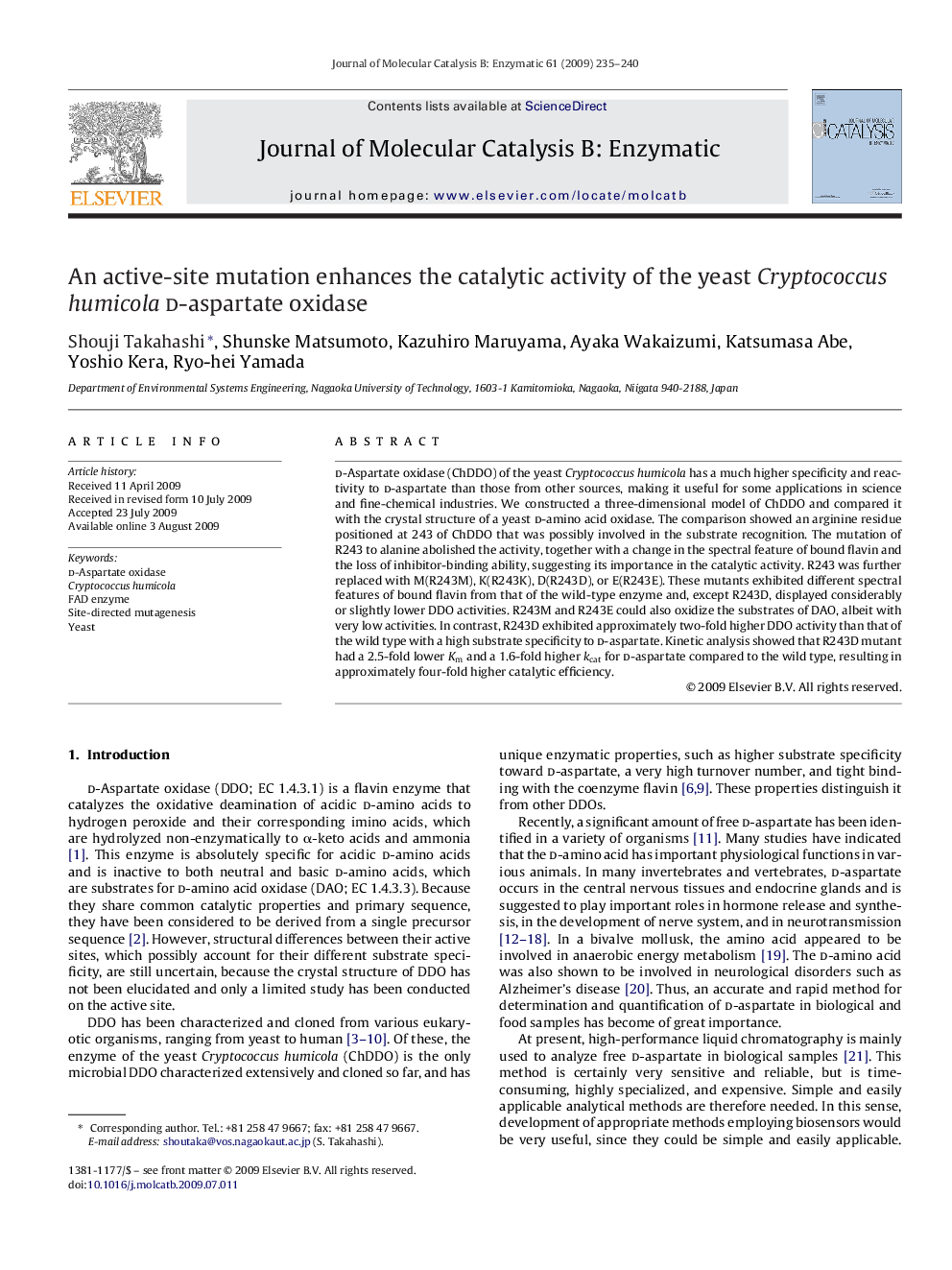| Article ID | Journal | Published Year | Pages | File Type |
|---|---|---|---|---|
| 70551 | Journal of Molecular Catalysis B: Enzymatic | 2009 | 6 Pages |
d-Aspartate oxidase (ChDDO) of the yeast Cryptococcus humicola has a much higher specificity and reactivity to d-aspartate than those from other sources, making it useful for some applications in science and fine-chemical industries. We constructed a three-dimensional model of ChDDO and compared it with the crystal structure of a yeast d-amino acid oxidase. The comparison showed an arginine residue positioned at 243 of ChDDO that was possibly involved in the substrate recognition. The mutation of R243 to alanine abolished the activity, together with a change in the spectral feature of bound flavin and the loss of inhibitor-binding ability, suggesting its importance in the catalytic activity. R243 was further replaced with M(R243M), K(R243K), D(R243D), or E(R243E). These mutants exhibited different spectral features of bound flavin from that of the wild-type enzyme and, except R243D, displayed considerably or slightly lower DDO activities. R243M and R243E could also oxidize the substrates of DAO, albeit with very low activities. In contrast, R243D exhibited approximately two-fold higher DDO activity than that of the wild type with a high substrate specificity to d-aspartate. Kinetic analysis showed that R243D mutant had a 2.5-fold lower Km and a 1.6-fold higher kcat for d-aspartate compared to the wild type, resulting in approximately four-fold higher catalytic efficiency.
